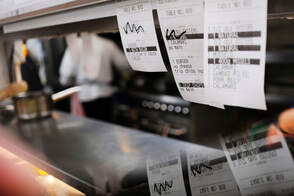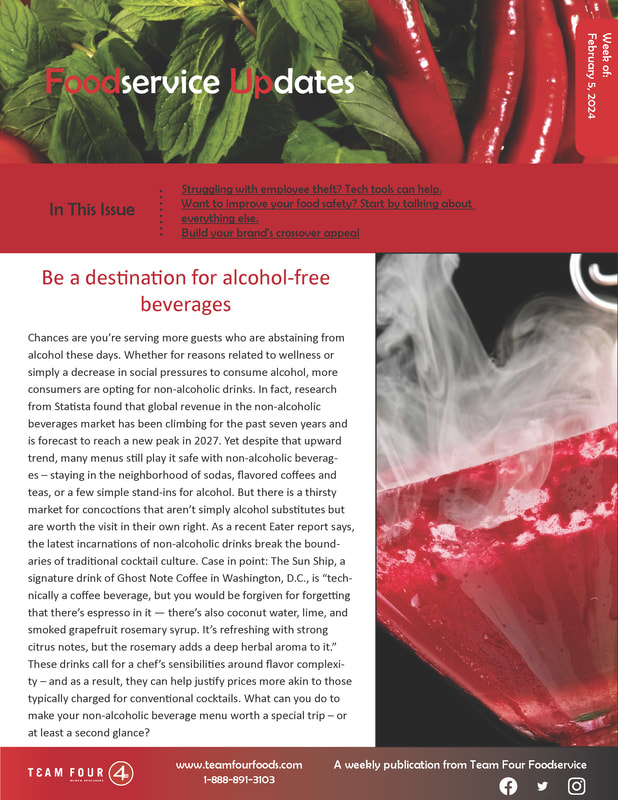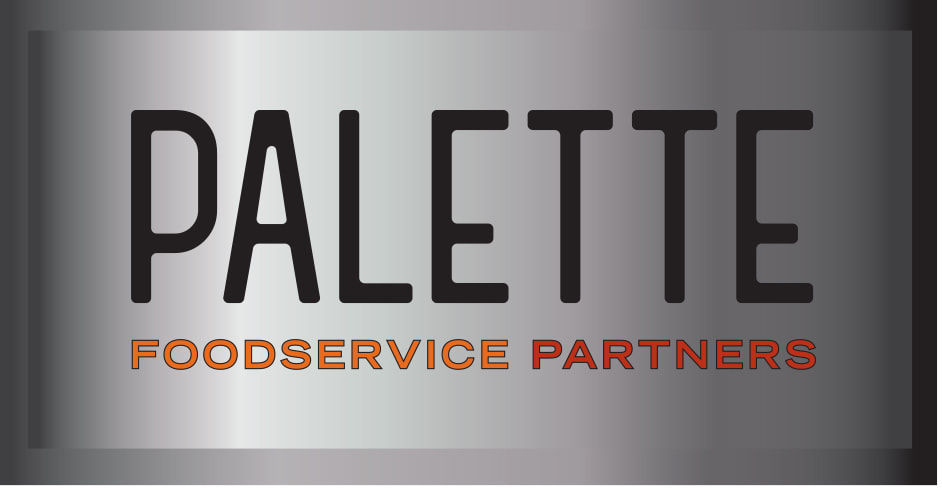 Much as some consumers – and restaurant operators – might worry that technology is gradually replacing the human touch in restaurants, the businesses that can find the sweet spot between tech and human connection are in a powerful place. They not only know how to provide great service, but they also know what specific messages have the best chance of connecting with guests and motivating them to visit repeatedly. This recent Fast Company interview with restaurateur Danny Meyer demonstrates what can happen when that is missing: Meyer shared a story about an occasion when his restaurants sent out a mass email to all customers on their list. At the time, the restaurants were trying to fill tables during a snowstorm, and the email invited guests to bring their own bottles of wine to the restaurant and have them served with no corkage fee. But for the email recipients who didn’t drink alcohol, the message did not connect (at best) and in some cases even caused offense. Imagine how that attempt at engagement might have gone differently if the message about wine was directed to just the wine connoisseurs in their guest database, and separate offers were sent to similarly specific segments of guests. They would have ensured that the guests who responded to the offers were primed to have a good experience there. Just as importantly, they would have avoided turning off a guest who had already bought into their brand and willingly shared their email address, thinking the restaurant was a business who understood their preferences. Do the systems you have in place help you create the kinds of offers that connect with guests and make them feel understood?  There are certain service tasks in your restaurant that can easily be delegated, allowing you to provide better service (and with fewer staff) as a result. Maybe you have a website with a lot of functionality that serves as a hub for multiple business streams. Or you’re spending too much time answering the same questions from guests. Are you leaning into your technology to help guide people through your website and answer common questions? Can you automate the processing of orders from guests through a kitchen display system and allow for detailed modifications – all while minimizing errors and bottlenecks? Can you quickly direct targeted promotions to multiple segments of guests? Using technology in these ways can help you “set and forget” certain repetitive tasks so you can spend more time where it matters – in front of your guests and developing the kinds of offers they are craving.  As the capabilities of automation continue to spread across restaurant kitchens and their broader operations, many businesses may be in the position of not being able to make near-term changes due to cost constraints or simply because it can be difficult to let go of certain tasks that have long been done a different way. Fortunately, in an industry that’s built around data, there are plenty of data-driven examples demonstrating how automation is transforming various restaurant tasks – and quick-service restaurants will likely be the ones showing the industry how it’s done. A survey of operators by PYMNTS found that QSR operators plan to automate nearly half of all store tasks over the next two years, while full-service restaurants plan to automate just one-quarter of these tasks. It will be worth tracking the growth trajectories of various restaurant categories in the coming years to see where investments in automation are paying off – or not.  Only 37 percent of consumers agree that more technology inside of restaurants means better customer service. That’s according to a PYMNTS Intelligence survey of more than 2,200 U.S. consumers conducted last year. That doesn’t mean that technology isn’t delivering better service – just that the guest-facing applications don’t necessarily make that clear to guests. So focus on using tech to operate as efficiently as possible behind the scenes – to keep guests’ favorite menu items in stock, automate repetitive tasks that occupy your staff’s time, and prioritize line prep tasks so your staff can effectively balance competing streams of orders. The better you can manage demand in the kitchen, the more time your staff will have to spend in the dining room with guests, making sure their experience feels like a positive one.  As artificial intelligence becomes a larger part of consumers’ daily lives, it is taking a couple of distinct paths in the restaurant industry. Its generative applications are helping restaurants respond in real time to guest questions in the drive-thru line, as well as draft emails to staff and develop ideas for guest promotions. Its predictive applications are enabling restaurants to make more educated decisions about how to manage inventory, schedule staff, and anticipate guest traffic over a holiday weekend. These applications are increasingly being woven into restaurant tech platforms and becoming just a part of doing business – Square and AzureOpenAI are among the companies whose generative and predictive AI applications being adopted by large brands right now, Restaurant Dive reports.  Restaurant technology has seen a flurry of change in the past several years as businesses have adapted to new revenue streams and ways of placing and paying for orders. Further, many restaurants have been adopting tech to manage multiple new streams of traffic and to ensure that consumers have the same brand experience across the board. If you adopted new tech tools in quick succession to manage evolving needs and challenges in your restaurant, it may be a good time to step back and assess how well your current configuration is working now, in addition to how well it suits your expected trajectory as a business. For example, has your guest traffic settled into a pattern as people have returned to offices or stepped away from them? Are your menu items generating the right response at the right times? Are you getting the information you need about your business in real time – and then making the necessary adjustments to staffing, menus, ordering and promotions as a result? Restaurant technology can be very helpful in collecting the information that you’re asking it to gather – but it’s also important to look beyond it and assess what information you may be missing. Planning ahead, does your tech need to change or evolve to help you take advantage of opportunities you’re missing right now?  Amid the rise in tech-driven automation, ordering and payment capabilities in recent years, one question often hovers in the background: Will restaurant jobs be eliminated? While it’s clear that some roles are becoming obsolete in light of these changes, it’s also true that new ones are appearing. Specifically, as restaurants juggle multiple tech-based ordering channels – and vie for guest engagement and sales – they are looking for people who can develop and build upon their digital expertise. Increasingly, large restaurant chains and parent companies of such brands are hiring digital leadership roles – a recent Pymnts report mentions Denny’s and Focus Brands as two examples. Smaller, independent brands are likely adapting too. If you have found ways to outsource restaurant tasks to tech, are there opportunities in your business for key staff to take on new responsibilities in digital management and development?  Your ability to manage what’s happening at the back of the house – and particularly the ingredients that you have available – can make as much of a difference to your guest experience as a streamlined ordering and payment process. Your inventory management tools should help you communicate in real time about what you are able to serve guests and what items shouldn’t be advertised for sale. At the same time, it should empower you to stay a step ahead of such events so you’re not often in the position of having to tell guests you’re out of the dish they specifically came to your restaurant to enjoy. While being able to fulfill a guest’s anticipated order won’t necessarily build their loyalty, not having that dish will certainly chip away at it.  When deciding where to invest in technology improvements, it makes sense to focus on the back of the house first. Once you have support with employee scheduling, inventory management and other operational functions, your staff should have more time to deliver positive experiences for guests (which also helps them feel more positive about their jobs). This is the approach that Domino’s – long a trendsetter in the restaurant tech space – is taking with their embrace of new AI tools the brand is developing in partnership with Microsoft Cloud and Azure OpenAI Service. According to a recent report from Nation’s Restaurant News, Domino’s is working on a generative AI assistant to support employees and personalize customer service, with special focus on invisible back-of-house technology. The brand’s chief technology officer said she believes helping the team access information and make decisions more quickly can help them respond more promptly and effectively when mistakes are made. This makes people’s jobs easier to do – and will likely trickle into the front of the house in the form of shorter order times, fewer mistakes and a better overall experience. It’s worth bearing in mind as you consider tech priorities, regardless of whether you’re implementing generative AI or not.  Your restaurant is likely becoming more digitally connected all the time – not only with guests, but also with equipment across your kitchen and with vendors across your supply chain. While this connectivity brings greater control and oversight of how your business is operating in real time, it also creates new security vulnerabilities. Are you doing all you can to protect the data you store and the devices that collect and transmit it? A recent Restaurant News report advises restaurant operators to prioritize network security protections including (but not limited to) encryption and protocols for authenticating users. It’s also important to scan regularly for potential vulnerabilities. Your technology service provider should provide support here – and have a number you can call whenever concerns arise. |
Subscribe to our newsletterArchives
July 2024
Categories
All
|



 RSS Feed
RSS Feed